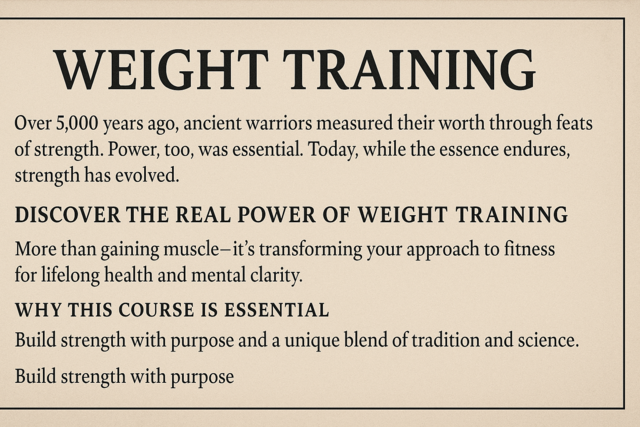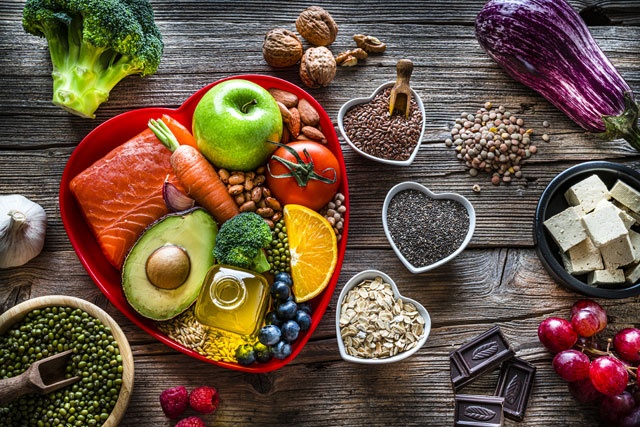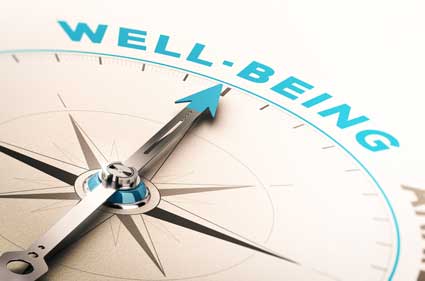Allergies and food sensitivities
When you have a food allergy, your body incorrectly identifies a food item as a potential threat, and launches the immune system to attack the invader as it would a virus or bacteria. (Your immune system responds to the protein coating on the outside of food molecules.) To qualify as an allergy, the immune system has to be involved in the response. This is different from contracting food poisoning.
Common symptoms of food allergies include itching, hives, swelling, nausea, vomiting, and abdominal cramps. The most common allergy prone foods are peanuts, fish, shellfish, milk, eggs, wheat, soy, and tree nuts (like walnuts). If you suspect you have a food allergy, contact your doctor, who will evaluate your symptoms and may have you take an allergy skin test. There is no cure for food allergies. Most often, you will have to completely avoid the offending food item for the rest of your life, but some people (especially children) can outgrow their food allergies over time.
The U.S. government requires food labeling for the most common allergens, so it is important for people with food sensitivities to read labels on everything and ask lots of questions about foods served in restaurants.
Heart Disease
Diet is a major risk factor for heart disease, like hypertension (high blood pressure), obesity, and coronary artery disease. If you are suffering from heart disease, your doctor can provide you with a specific diet plan for your condition. In general terms, a heart-healthy diet would benefit just about anyone.
Healthy heart diet guidelines
-
Eat five fruits and vegetables per day. Or, every time you eat, include a fruit or vegetable.
-
Choose whole grains without added fat. You can eat about six portions of grains throughout the day, but be aware of portion sizes. Grains can be calorie dense, and it's easy to eat more than a portion size without realizing it. Whole grains (brown rice, whole-wheat pasta, corn, and beans) have the advantage of adding fiber to make you feel full. Steer away from refined grains and breads with added fat, like cheese crackers and buttery croissants.
-
Look for lean proteins.
-
Choose low-fat protein sources like white meat chicken, fish, peas, and lentils.
-
Avoid marbled meats like ribeye steak and chuck roast.
-
Limit the protein you eat from animal sources to about the size of a deck of cards per day.
-
-
Eat fish at least twice a week.
-
Steer clear of anything cooked in a deep fat fryer.
-
Cook food by broiling, baking, braising, boiling, roasting, or microwaving.
-
Invest in good-quality nonstick cookware.
-
-
When recipes call for one whole egg, substitute two egg whites (to reduce cholesterol and fat).
-
Keep your fat intake below 30% of your daily calories.
-
Reduce saturated fats to less than 10% of your daily calories.
-
Steer away from any foods containing trans fats.
-
Reduce your salt intake to less than one teaspoon a day (your doctor may restrict the level to half that amount)
-
Remove the salt shaker from your table.
-
Season your food with acidic flavorings like lemon, lime, or cider vinegar instead of salt.
-
When you make food from a recipe, use half the suggested amount of salt.
-
Make your own soups instead of using the canned variety.
-
Prepare your own food when possible.
-
Cancer
Only your doctor can fully address your personal cancer risk and health profile. However, the National Cancer Institute recommends that, to reduce cancer risk, everyone should eat more fruits and vegetables, about 5-9 servings per day.
Simple strategies to increase fruits and veggies:
-
Take portable fruit with you (banana, orange, pear, or apple) for a snack on the go.
-
Make small vegetables part of your snack plan (baby carrots, celery sticks, or pepper strips).
-
Pick up pre-made, packaged salads (instead of fries and a burger) when you're in a hurry.
According to MedLine, diabetes is a disease in which your blood glucose levels are too high. Blood glucose, also called blood sugar, comes from the foods you eat, and it gives you energy to walk, exercise, and breathe. To get glucose from your blood into your muscles, your body uses a hormone called insulin. There are two types of diabetes: Type 1 used to be called "juvenile diabetes," because this type of disease usually became apparent during childhood. People with Type 1 diabetes do not produce their own insulin, and they have to inject synthetic insulin so that their muscles can use glucose.
Type 2 diabetes used to be called "adult onset," because it used to develop later in life. Now, however, rates of Type 2 diabetes are on the rise among kids and adults. In Type 2 diabetes, your body may not make insulin properly or use it well. People become "insulin resistant," meaning their muscles don't allow glucose in, and it builds up in the blood, which can cause damage to your eyes, kidneys, and nerves. Diabetes increases your risk for heart disease and stroke.
There is another type of diabetes called gestational diabetes, which happens to pregnant women. Some cases of gestational diabetes resolve when the baby is born. Other times, the mother will continue to suffer from diabetes.
Diabetic diet
No matter which type of diabetes you have, managing your diet is essential. Your doctor or registered dietician can provide specific guidelines for your medical condition. As a general guideline, people with diabetes have to be very careful about the types of carbohydrates they eat, since this food component has the most immediate effect on blood glucose.
Refined carbohydrates like table sugar, honey, white bread, white potatoes, white rice, and plain pasta will affect blood sugar levels most dramatically. People with diabetes should limit their intake of refined carbs and choose complex carbohydrates instead.
Complex carbohydrates like oatmeal, brown rice, 100% whole-grain bread, and corn tortillas will take longer to impact blood sugar, but diabetes patients still have to monitor when and how many complex carbs they eat.
Timing is everything
Instead of overloading your body with a large batch of food to process all at once, it is easier on a diabetic body to break meals up into smaller portions throughout the day. Eating more frequent, smaller meals helps keep you from getting so hungry that your blood sugar drops too low, and it also avoids flooding your system with too much glucose all at once. Your doctor may also advise you to be sure that you eat a small snack, like a cup of yogurt or a granola bar, about an hour or so before you start to exercise. If you work out on an empty stomach, your glucose levels can drop to a dangerous level.
Less fat, salt, and alcohol
Most of the population of the US could stand to limit fat, salt, and alcohol, but it's especially important for diabetics. Excess fat can contribute to weight gain, which only makes the diabetes worse. Salt can worsen high blood pressure, which often goes hand-in-hand with diabetes. Drinking too much alcohol over a long period of time can make the body's response to insulin even worse, it contributes empty calories, and it is a second risk factor for some of the same complications brought on by diabetes.
Osteoporosis
Osteoporosis is a thinning of the bones that most often occurs among older women, but it can strike men and younger women also. When bones get thin, your risk of breaking a bone increases, and even a small fall or bump can result in a broken wrist, or worse, a hip.
Osteoporosis develops without any symptoms, so you may not know you have it until you break something. Bone density scans can help reveal your risk for the disease.
Healthy bones diet
Eating a diet rich in calcium and vitamin D can help lower your risk of osteoporosis. Low-fat dairy products like milk, yogurt, and cheese are all good sources of calcium. So is canned fish with soft bones you can eat, like salmon and sardines. Fruit juice is often fortified with calcium and vitamin D, these are a great choice for the lactose intolerant.
Exercise and your bones
Another great way to increase bone strength is weight-bearing exercise (any activity where your skeleton is supporting your weight), like walking, jogging, running, and dancing. Any high impact activity you do in your younger years signals your skeleton that it needs to lay down a heftier mineral base to protect itself. The stronger you can make your skeleton during your youth, the stronger it will continue to be as you age.
Overweight and Obesity
Some people think of overweight as an appearance issue, and they focus on the idea of being more attractive to the opposite sex, wearing smaller sizes of clothes, or having more confidence. The vanity aspect just barely scratches the surface of the overweight and obesity epidemic.
Carrying extra pounds puts a daily strain on every system in your body. Your skeleton has to support the extra weight. Every step you take is more work for your heart and lungs. Overweight puts you at risk for high blood pressure and heart disease. Over time, your body can lose its ability to regulate blood sugar, leading to Type-II diabetes. With extra weight, your risk of certain cancers increases (kidney, endometrial, breast cancer, colorectal, and gall bladder cancer).
Seriously overweight people also face subtle and not-so-subtle bias in daily life, and the weight can affect career, education, medical care, and relationships. This bias can have a negative effect on a person's self-image, and create a downward spiral of depression, anxiety, and low self-esteem. Filled with negative ideas about their own value, obese people may feel worthless, and stop caring about themselves, making it a whole lot harder to engage in positive lifestyle changes like improved diet and exercise.
BMI
The resulting number is your BMI. But what does that mean?
-
Underweight = <18.5
-
Normal weight = 18.5�24.9
-
Overweight = 25�29.9
-
Obesity = BMI of 30 or greater
In general, BMI is an effective measure of healthy body size, but it has to be used with some discretion. One problem with BMI is that it does not account for muscle density. So a world-class body builder with 2% body fat would appear to have a high weight/height, so his BMI might appear in the "underweight" range. On the opposite end of the scale, a thin elderly woman who has very little muscle mass and has to struggle to get out of her chair could have more than 30% body fat, and could show up in the "overweight" category.
Diet
Overweight and obese people can benefit from the general healthy eating guidelines for heart disease and for the general population. However, all that weight did not appear overnight and it will not disappear that fast, either. It can be helpful for obese people to focus on one small change at a time, and give themselves a week or two to adjust to one change before making another. For example, something as seemingly simple as giving up sodas is a significant behavioral change, and adapting to that one modification can take 2-3 weeks. The next step may be eliminating deep-fried foods, followed a few weeks later by reducing the amount of sweets.
People trying to lose weight should try to decrease daily calorie intake by 250 calories per day while increasing their exercise to burn another 250 calories per day, leading to a total calorie deficit of 500 calories per day and a weekly weight loss of 1-2 lbs. This slow pace can be frustrating to a person who is trying to lose 100 lbs. or more, but it's important to remember that slow changes last longer and are easier to adjust to. Eliminating 250 calories per day can be as simple as exchanging two Cokes for two glasses of water.
Exercise is a critical component of any weight loss effort, and particularly with the obese population. If you have been carrying around a lot of extra weight, you may already have one exercise advantage over a skinny person: your muscles and skeleton are already accustomed to carrying a lot of weight. For this reason, weight training can be a natural fit for an obese person. It is also less "jumpy" than aerobics. All exercise is good exercise, the important thing is to find something you like, or at least don't hate.
For obese people, weight is often just one aspect of a larger problem. Most obese people have tried to lose weight several times before and have been unsuccessful for a variety of reasons. They may feel like weight loss is impossible for them, and they may also feel like the struggle just isn't worth it. The struggle to change can be complicated by low self-esteem. If you are in this situation, or if you are trying to help someone who is, you have to realize that people don't become obese because they are weak or because they have some sort of character flaw. It happens slowly, one pound at a time. It can be complicated by medical issues, a distorted sense of reality, lifestyle issues, an unhealthy social network, and countless other problems. Although the dietary guidelines for obesity are generally the same as for anyone else, it may help to work with a counselor or trained mental health professional, who can help address some of the internal issues that make long-term change so difficult.































